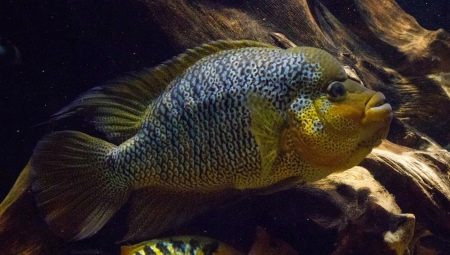American cichlids are a surprisingly beautiful species of fish and are of great interest to aquarists. The great popularity of cichlids is due to their unusual color and the presence of their intellectual abilities.
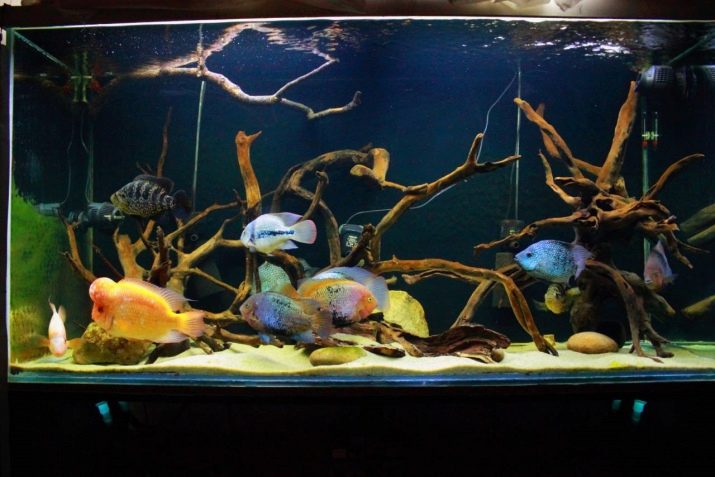
Description
American cichlids are the most prominent representatives of the cichlid family, which is part of the perch-like squad. The family includes more than 1300 species, most of which live in open waters of Asia, South America and Africa.
Cichlids are divided into three large groups: South American, Central American and Dwarf, and all of them are able to breed in captivity. Fish have a bright and very beautiful appearance and are quite suitable for aquarium keeping. The size of aquarium American cichlids depends on the type of fish and ranges from 2 to 40 cm, although in the wild there are specimens reaching 90 cm.
Separately, the behavioral characteristics of American cichlids should be noted. Fishes are very wayward and from the first days of appearing in the aquarium they try to establish their orders in it. Due to excessive bullying, they are often planted in separate containers and grown in complete isolation from other species. Many aquarists note the ingenuity and cleverness of their pets, who easily remember the owner in the face and often eat from his hands.
Given the bad nature and high conflict of cichlids, community formation should be undertaken from the young age. Over time, the grown fish begin to form pairs and occupy the territory, which subsequently zealously guard from fellow tribesmen, displaying aggression if necessary.
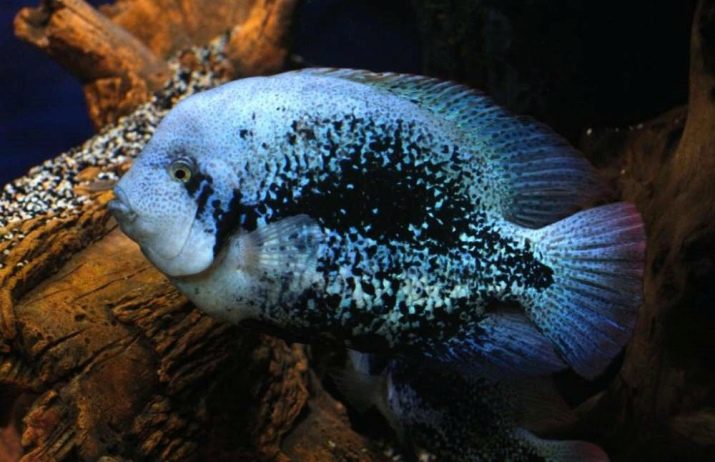
Kinds
American cichlids are represented by many species. Below we will talk about the most popular ones - those that are quite common in home aquariums and aquariums.
- Angelfish are the most sought-after aquarium fish of the cichl family, these are real favorites of breeders. As a result of genetic experiments, it was possible to obtain individuals with the most incredible color, which is not found in the wild.
Today you can find black, white, red, chintz, blue, chocolate, green and even pink scalar.

- Bolivian butterflies belong to the group of dwarf cichlids and are distinguished by an elegant body shape and delicate coloring of a beautiful cream shade.
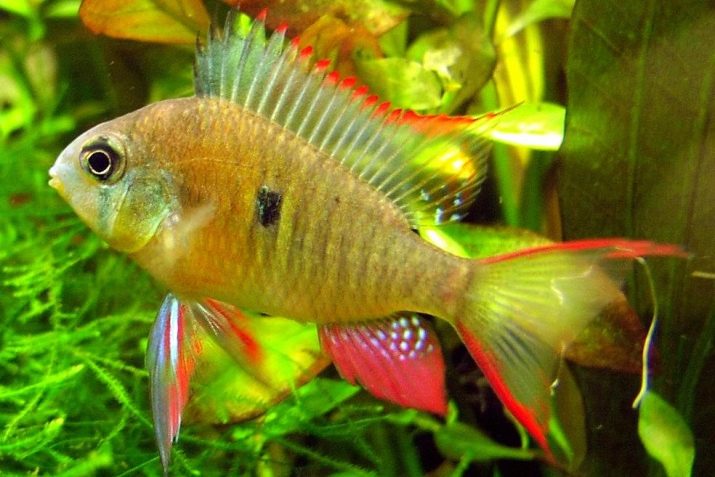
- Apistograms Ramirezi they also belong to miniature species of cichlids and rarely grow up to 5 cm. Fishes are distinguished by a good disposition and loyal attitude to aquarium algae, which is why they often settle in herbalists.
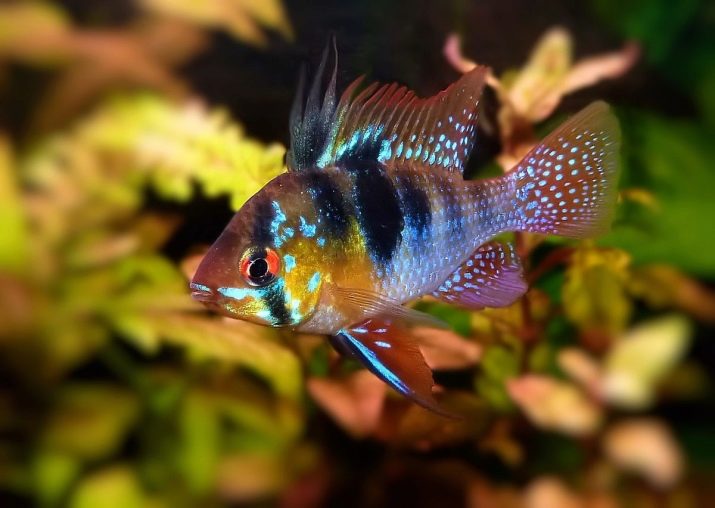
- Discus very beautiful, but demanding on the conditions of detention. With a large volume of the aquarium and the creation of favorable conditions, adult individuals can grow up to 25 cm. Representatives of the species are regular participants in breeding experiments, as a result of which monophonic and multi-colored colors were obtained: blue, yellow, white, red, red-white, orange-white and red-blue.
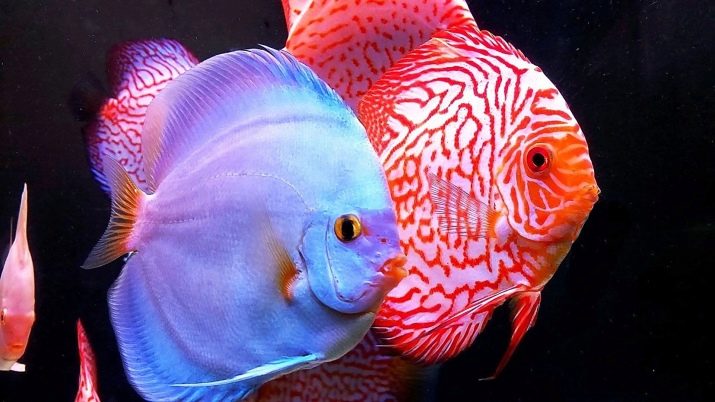
- Severum They are the closest relatives of the discus and, due to some similarities with them, have received the name "false discus". But they are not so demanding and picky in care, and therefore are great for beginners. As a result of selection, it was possible to obtain red, pink, orange and emerald individuals, which become a worthy decoration of the aquarium and the pride of the aquarist.
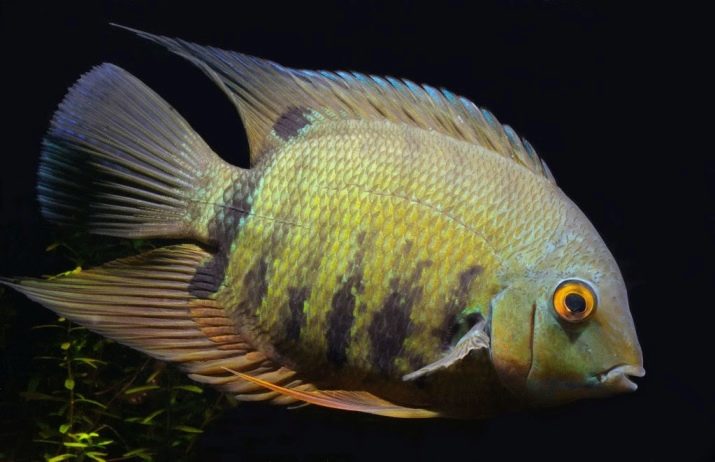
All the species discussed above are quite peaceful and non-aggressive, and therefore suitable for lovers. They will not eat another living creature and will not be at enmity with each other. But there are other types of moderately aggressive cichlids, the breeding of which requires some experience and certain knowledge from a person.
- Eight-Striped Cichlomas they are a fairly peaceful species of fish and can show cockiness only in the case of territorial encroachments by other individuals.
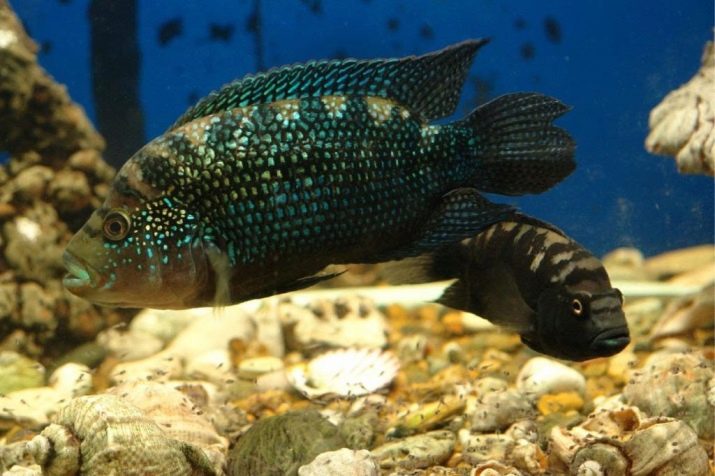
- Geophagus They represent a whole group of earth-eating fish, distinguished by an unusual way of feeding. They collect soil in the mouth and carefully filter it, trying not to miss a small worm, crustacean, or insect larva. Aggression appears only during spawning and is exclusively territorial in nature.
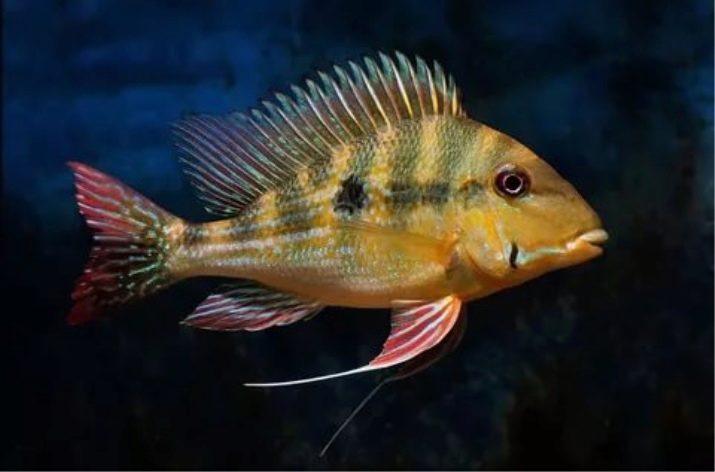
- Meek Cichlazomas They are beautiful large fish, which also show some irritability during the spawning period, and when a stranger swims, they can attack a territory under their control.
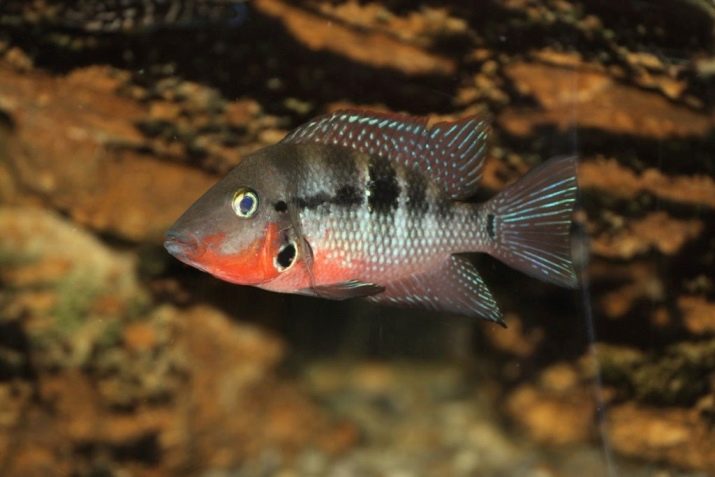
- Black-banded Cichlazoma are the most unpretentious of cichlids, are highly fertile and can be used by beginner aquarists as the first community.
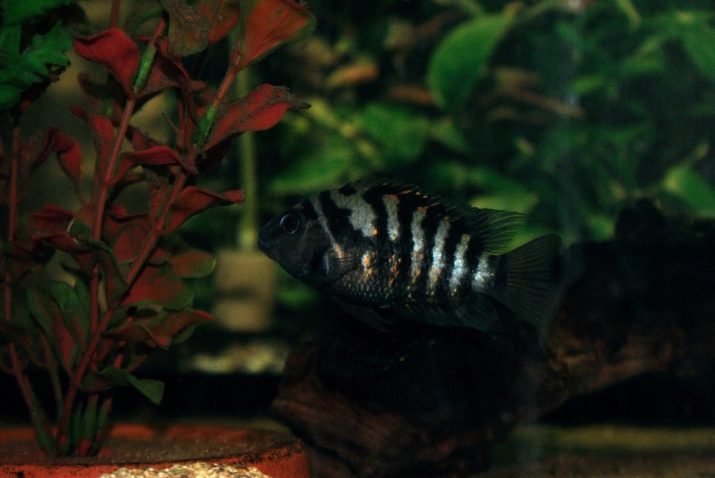
And finally, we will consider the most aggressive species of American cichlids, the content and breeding of which can only be done by experienced aquarists. Such pets need to create special conditions, individual selection of the neighborhood and close control over their behavior. Otherwise, they can eat the calm and peaceful inhabitants of the aquarium or each other.
- Astronotus represent large, majestic predators living in the waters of the Amazon. Despite the high aggressiveness of adult individuals and their predisposition to the destruction of aquarium interiors, this species is very popular among aquarists and is actively used in breeding work. So, through the efforts of specialists, many colors uncharacteristic for this species were obtained, which is why red, nut, white and even golden fish are not uncommon.

- Red Devil in temperament, they fully correspond to their name and are large and very evil predators.Due to its size, 350 liters of water are required for every adult, 250 for a teenager. Therefore, breeding and keeping this species requires the selection of large aquariums and special equipment for fish life support.

- Akara they are beautiful, large (over 30 cm), but very aggressive fish, which, in order to avoid the death of the rest of the livestock, are kept separately from other species.
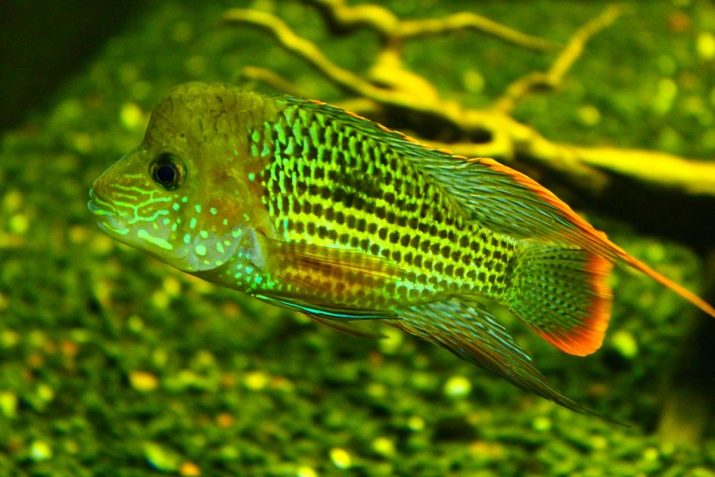
Care Features
American cichlids are fastidious fish and need to create optimal conditions for temperature and acidity of the water. Fish will not survive in ordinary tap water, due to the presence of impurities with a high content of chlorine, phosphates and nitrates in it. Water for cichlids must be settled, filtered and saturated with oxygen.. In addition, all species are very sensitive to temperature changes and need to maintain a comfortable thermal mode.
Optimal for most species is a temperature of at least 18 degrees. In colder water, the stock begins to hurt and remain in a depressed state, and excessively weakened individuals may even die.
As for acidity, the optimal indicator is a pH of 5 to 7 units, since it is this acidity that natural reservoirs in which wild species of American cichlids live.
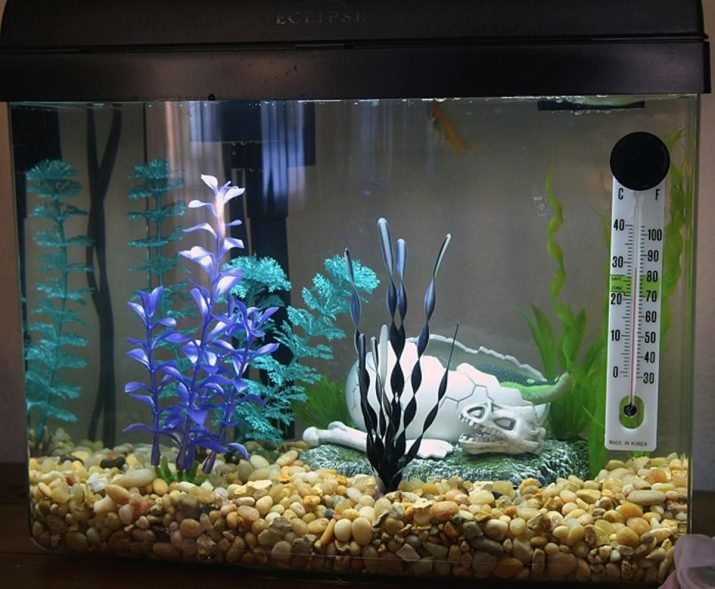
The next important point in keeping fish is the correct formation of communities. So, when arranging the aquarium, special attention should be paid to the presence of shelters, where peaceful neighbors can hide. Companions should take more calm representatives of the ichthyofauna of the same size and age as the cichlids themselves. To do this, you need to acquire a large aquarium, since overpopulation can provoke attacks of aggression even in peace-loving individuals.
When choosing containers for large tropical species, it should be remembered that Such fish need conditions close to their natural environment. This is especially true for Managuan cichlases and astronotuses.
Therefore, aquariums for them should be populated by vegetation characteristic of open water bodies. Plants such as cryptocoryne and echinodorus are well suited for these purposes.
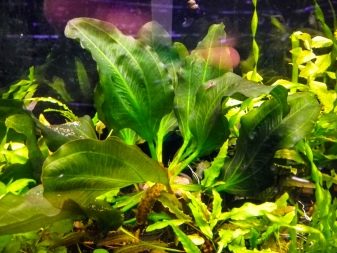
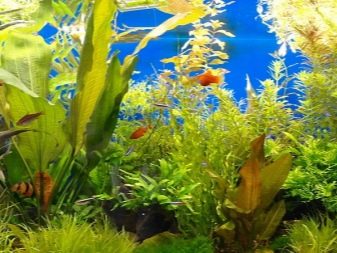
Feeding
American cichlids are unpretentious and can eat live, canned, frozen or dry balanced food containing the full range of essential trace elements. They eat well tuber, bloodworm, artemia, sea fish and squid, as well as green peas, lettuce, cucumbers, zucchini and spinach. The meat is poorly absorbed in the body of fish, so it should not be given.
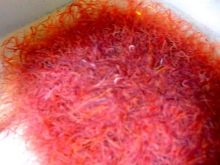
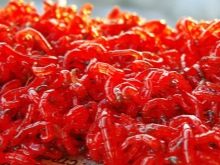
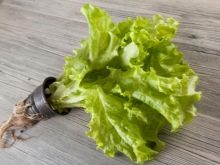
Cichlids are prone to overeating and often begin to beg for food from the owners. You should not succumb to their "persuasion", since overfished fish quickly grows fat and begins to hurt. With proper care and feeding, cichlids practically do not get sick, most of them can live up to 10 years or more.
About American cichlids see below.
